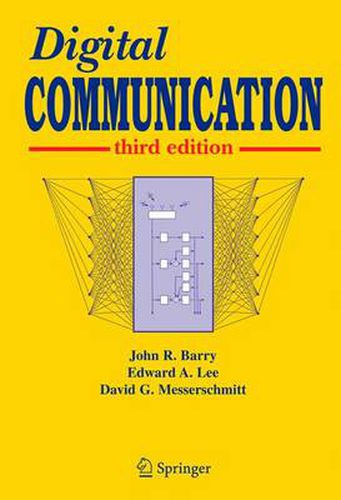Readings Newsletter
Become a Readings Member to make your shopping experience even easier.
Sign in or sign up for free!
You’re not far away from qualifying for FREE standard shipping within Australia
You’ve qualified for FREE standard shipping within Australia
The cart is loading…






This book concerns digital communication. Specifically, we treat the transport of bit streams from one geographical location to another over various physical media, such as wire pairs, coaxial cable, optical fiber, and radio. We also treat multiple-access channels, where there are potentially multiple transmitters and receivers sharing a common medium. Ten years have elapsed since the Second Edition, and there have been remarkable advances in wireless communication, including cellular telephony and wireless local-area networks. This Third Edition expands treatment of communication theories underlying wireless, and especially advanced techniques involving multiple antennas, which tum the traditional single-input single-output channel into a multiple-input multiple-output (MIMO) channel. This is more than a trivial advance, as it stimulates many advanced techniques such as adaptive antennas and coding techniques that take advantage of space as well as time. This is reflected in the addition of two new chapters, one on the theory of MIMO channels, and the other on diversity techniques for mitigating fading. The field of error-control coding has similarly undergone tremendous changes in the past decade, brought on by the invention of turbo codes in 1993 and the subsequent rediscovery of Gallager’s low-density parity-check codes. Our treatment of error-control coding has been rewritten to reflect the current state of the art. Other materials have been reorganized and reworked, and three chapters from the previous edition have been moved to the book’s Web site to make room.
$9.00 standard shipping within Australia
FREE standard shipping within Australia for orders over $100.00
Express & International shipping calculated at checkout
This book concerns digital communication. Specifically, we treat the transport of bit streams from one geographical location to another over various physical media, such as wire pairs, coaxial cable, optical fiber, and radio. We also treat multiple-access channels, where there are potentially multiple transmitters and receivers sharing a common medium. Ten years have elapsed since the Second Edition, and there have been remarkable advances in wireless communication, including cellular telephony and wireless local-area networks. This Third Edition expands treatment of communication theories underlying wireless, and especially advanced techniques involving multiple antennas, which tum the traditional single-input single-output channel into a multiple-input multiple-output (MIMO) channel. This is more than a trivial advance, as it stimulates many advanced techniques such as adaptive antennas and coding techniques that take advantage of space as well as time. This is reflected in the addition of two new chapters, one on the theory of MIMO channels, and the other on diversity techniques for mitigating fading. The field of error-control coding has similarly undergone tremendous changes in the past decade, brought on by the invention of turbo codes in 1993 and the subsequent rediscovery of Gallager’s low-density parity-check codes. Our treatment of error-control coding has been rewritten to reflect the current state of the art. Other materials have been reorganized and reworked, and three chapters from the previous edition have been moved to the book’s Web site to make room.